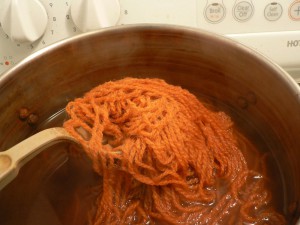Gardening season is kicking into gear here in Amherst, MA. This year I am planning to add swamp milkweed (Asclepias incarnata) and amsonia (Amsonia spp.) to my fiber and dyeplant garden at Bramble Hill Farm. I got the swamp milkweed seeds from my sister, Simone, from a plant near her apartment. You can see a photo of some cordage I made from it in an earlier blog post here.
I was inspired to grow amsonia after botanist and fellow-flax-enthusiast, Carolyn, brought some gorgeous bast fibers from her amsonia plants to one of our flax and linen study group get-togethers. On my initial foray to Andrew’s Greenhouse yesterday I found three varieties of amsonia available, but wasn’t sure which one might be best, so I shot off an email to Carolyn. She sent back some good advice, plus this incredibly awesome link which I must now urgently share with anyone else who might be reading my blog! Continue reading “Microscopic Fiber Images”


